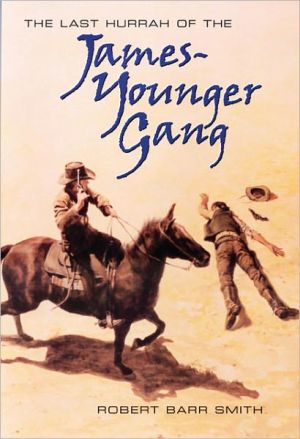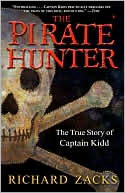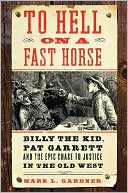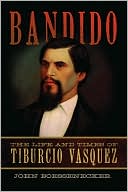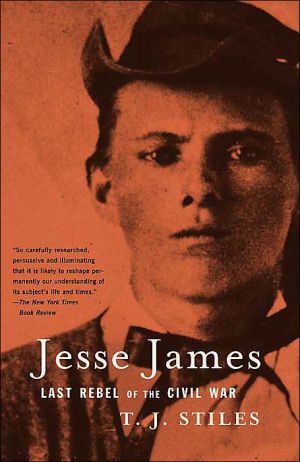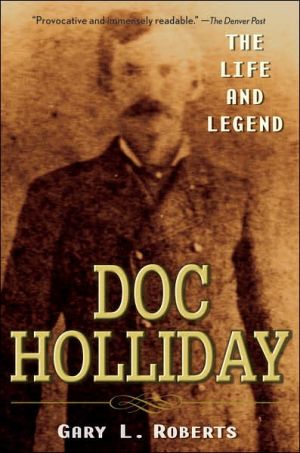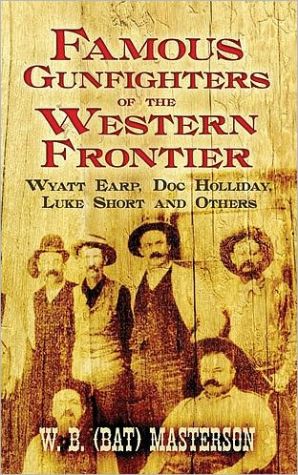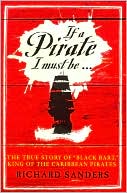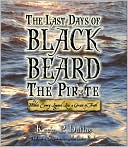The Last Hurrah of the James-Younger Gang
So small it had only one bank, so quiet no citizens carried guns. Hard-working, peaceful Northfield, Minnesota, was an orderly yet busy mill-town in the heart of prosperous farm country. On a serene autumn Tuesday in 1876, local shopkeepers, farmers, and citizenry went about their normal routines, little realizing that the infamous and deadly James-Younger gang had designs on tiny Northfield.\ The experienced robbers planned to target the single bank, which held the hard-earned money of the...
Search in google:
Smith reviews the violent Civil War heritage of the Jameses and Youngers, their extensive criminal careers after Appomattox, the subsequent history of the outlaw survivors of Northfield, and the later lives of the Minnesota defenders. Library Journal Many books have been written about the James brothers, Jesse and Frank, and their associates the Younger brothers. This title is the first book-length treatment of the attempted bank robbery in Northfield, MN, in 1876, in which several of the outlaws were killed; others, including the Younger brothers, were captured and imprisoned; and only two escaped. The botched robbery drew the attention of the townspeople, who got guns from their homes and the local hardware store and outfought the raiders. Whether the James brothers were present has long been a matter of debate, but Smith (To the Last Cartridge) argues that they were and were the two henchmen who got away. Smith's detailed account of the raid is prefaced by chapters that relate the violent, murderous climate of the Kansas and Missouri border region in the Civil War era, the place and time that molded the James and Younger brothers. He concludes by describing the latter years of both the surviving outlaws and the surviving heroes of Northfield who defeated this famous outlaw clan. A readable enough book, this is illustrated and has adequate chapter notes. While not essential for academic libraries, unless for large Western collections or regional collections, this title would likely be popular in the public library setting. Charles Cowling, SUNY at Brockport Lib. Copyright 2001 Cahners Business Information.
Chapter One \ \ \ The Desperadoes\ \ \ This book is not primarily about the hoodlums who made up the James-Younger gang, but the gang members are nevertheless major players in the Northfield drama and thus require some space. In the first place, it is important to remember that in one way or another all of these men were products of the vicious Civil War guerrilla struggle along the Kansas border, or of the chaos of postwar Missouri, or of both. Although this does not begin to excuse their behavior—always lawless, sometimes downright sadistic—it goes far to explain their indifference to human life and property. As I commented in the introduction, the James brothers and the Youngers were no more "driven" to a postwar life of crime than any other Missouri guerrilla was. What the border war did do, however, was give the brothers a chance to taste the intoxicating delights of licence and violence and easy money. The boys' natural proclivities did the rest.\ The James brothers were veterans of the bushwhackers, the Civil War guerrilla bands of Quantrill and George Todd and Bloody Bill Anderson. So were Cole Younger and his brother Jim. Bob and John Younger were too young for the war but turned outlaw after the fighting had ended. There is a striking similarity between the two sets of brothers. The James boys hailed from a farm in Clay County, in western Missouri; the Youngers were born in Lee's Summit, just to the south in adjoining Jackson County. Both families were solid, honest, respectable and, by the standards of the time, well-to-do. Both families sufferedterribly during the war, but so did most families in the region.\ It is said that the Youngers and Jameses were related, but this is just one of the many myths that have grown up around American outlaws. The Youngers were related to the Oklahoma outlaws Grat, Bob, and Emmett Dalton, who were shot down in 1892 by angry citizens in Coffeyville, Kansas. Adeline Dalton, the mother of Grat, Bob, and Emmett (and of Bill, killed later as part of the Doolin gang), was a Younger, the aunt of Cole and the rest of the boys. Oddly, there was a remote connection by marriage: a niece of the second husband of the James boys' mother married Cole Younger's uncle. However, there was no blood connection between the Younger brothers and the James boys, except for the spilled blood of other people.\ The James boys' father, Robert, became a minister and settled in Clay County with his wife, Zerelda Cole. They worked a 275-acre farm near Kearney (then called Centerville), and Robert still found time to found three Baptist churches and help to establish William Jewell College in Liberty. Of their four children, three lived to adulthood, a daughter and two sons. The boys were Alexander Franklin James, called Frank, and Jesse Woodson James.\ There's a certain amount of mythology surrounding even the early days of the James brothers' life in Missouri. For example, one source says that the boys were actually half brothers, Jesse having been sired by "a Clay County Physician." The same source also maintains that Bob Ford didn't kill Jesse, who lived on for many years under another name. A similar story is told by a superannuated impostor, one J. Frank Dalton—that he was in fact Jesse James, having lived for a century or so and used "72 identities" while gadding about the country on the business of the "Knights of the Golden Circle." The Knights were supposed to be a group of unreconstructed rebels who maintained huge repositories of weapons for a second civil war and even furnished Gatling guns to the Sioux who killed Custer. There were two Jesse Jameses, according to this tale, the outlaw Jesse and his cousin, "Dingus." Conveniently for outlaw history, this Jesse also had a brother named Frank, a doctor, and they happened to have a brother-in-law named Cole Younger, a "civil engineer." And so on, curiouser and curiouser.\ There's a whole book about this, including the story that Jesse James actually killed Wild Bill Hickok in Deadwood and was once married to Myra Maybelle Shirley, better known to history as Belle Starr. As if that weren't enough, it asserts that Jesse became one of Henry Ford's original backers and a financial supporter of Thomas Edison. The book is a delight to read but about as reliable as Mother Goose. Sadly for those who believed claptrap like this, the exhumation and DNA testing of the body in Jesse James's grave proved conclusively that Jesse was indeed murdered in St. Joseph back in 1882 and had been underground ever since.\ In fact, both Jesse and Frank were full brothers and grew up on their parents' farm in Clay County. What little education the boys had, they received at rural Pleasant Grove School. Reverend Robert James's busy, respectable life changed abruptly in 1850, when he went west to the California gold fields. In those days many men left their families for the California diggin's simply to escape the routine of married life, but Robert seems to have had loftier motives. For all Reverend James's good works would not provide what he wanted most for his growing family—education.\ The accepted reason for his going is that he thought he might turn California paydirt into more Missouri churches and education for his children. Reverend James never returned. He died in Marysville not long after he got to the gold country, probably of cholera, and the family was left on its own. Zerelda was a widow at twenty-six.\ Zerelda Cole James was made of stern stuff, a formidable lady almost six feet tall. She was determined to hold on to the farm and raise her children. And so in 1855, after a short-lived, unhappy marriage to a farmer named Simms, she married Dr. Reuben Samuel. By all accounts, the doctor was a gentle, kind man who treated Zerelda's boys and their sister, Susan, as his own. The children called him Pappy. Life on the Samuel-James farm flowed on in its peaceful, busy way, and the family seems to have been happy and close. In time Dr. Samuel and Zerelda produced four more children.\ The James brothers grew up as ordinary Missouri farm kids accustomed to the outdoors and to hard work. Religion played a substantial part in the life of the family, and one story says it was a lasting one. Years after Jesse had taken the outlaw trail, he met a Baptist minister who had known him before the war. Even then, the minister said, even after all the blood, Jesse still carried his New Testament, tattered and much thumbed. And so the James boys grew up, used to the good things of Missouri farm life: lots of hard work, a close family, and church on Sundays.\ Until the war. The trouble had been coming for a long time, and there had been rumblings and mutterings long before the first cannon spat its venom at Fort Sumter. The James family's Clay County was in the eye of the storm. The boys and their neighbors grew up in a world permeated by the violence and hatred and passionate rhetoric of the death struggle between free soil and slavery. There was venom even in the children's play, where the enemy was always old John Brown and the Kansas Redleg leader Jim Lane.\ The roots of the bitter struggle along the Kansas-Missouri border had been growing deep for twenty years and more. Back in 1820 the Missouri Compromise established that all of what was called the Unorganized Territory—the Louisiana Purchase less Missouri—should be free soil. In 1854 two new territories were created, Kansas and Nebraska. The residents of each were to decide whether slavery would be permitted in their territory. The pro-slavery party was convinced that Nebraska would vote free-soil and became determined to bring Kansas into the Union as a slave state. If Kansas entered the Union on the free-soil side, the South would lose its critical free soil/slave state equilibrium in the United States Senate.\ Such a loss of power was unthinkable, and to prevent it the proslavery men were determined to fight. The anti-slavery settlers were equally dedicated. Colonies of New England immigrants appeared in Kansas, and their settlements began to grow and multiply. Money poured in from the East to support them, and so did crates of Sharps rifles, affectionately known as "Beecher's Bibles" after the abolitionist clergyman. Some called these free-soil colonists "rifle Christians." A good many Union men lumped all southern sympathizers together as poor white trash, vulgar thugs the free-soil men collectively and contemptuously called "pukes." Not to be outdone, southern colonists appeared as well, and men began to openly take sides. And as people became angrier, they became less particular about how they advanced their political and moral aims.\ As one Kansas newspaper bitterly editorialized, "I have seen thousands of armed Missourians cross the river ... to vote in an election, and return home the next day." And, indeed, when Kansas elected a pro-slavery legislature in 1855, 6,307 votes were cast by only 2,905 lawful voters. The surplus ballots came from a mob of invaders from Missouri, with "guns on their shoulders, revolvers stuffing their belts, bowie knives protruding from their boot-tops, and generous rations of whiskey in their wagons."\ "Bleeding Kansas," the eastern papers called it, and the name stuck. There was much raiding, stock killing, and barn burning certainly, but how much actual human bleeding there was will never be known. One source estimates that no more than fifty-five men died in factional strife during the 1850s. Another account, however, puts the death toll at about two hundred for a single thirteen-month period in 1855-56. As the years went by the hatred mounted, even among the majority of Kansas men who only wanted a new life and a place to call their own.\ Some of the Missouri "border ruffians" were indeed the scum of the earth. For example, there are few nastier pieces of work in history than William Clarke Quantrill, leader of the bushwhacker band with which Frank James rode during much of the war. In later days southern sympathizers frequently portrayed Quantrill as a dashing cavalier, ever merciless to the detested Redlegs and Jayhawkers, unfailingly courteous and deferential to the ladies. Quantrill, always conscious of his concocted image, seems to have cultivated a reputation for gallantry, writing four poorly rhymed poetic verses in the autograph album of a Wakefield, Kentucky, lass, Miss Nannie Dawson. One of them went like this:\ \ \ My horse is at the door\ And the enemy I soon may see\ But before I go, Miss Nannie,\ Here's a double health to thee.\ \ \ Thus the southern sympathizers, who for their part cordially detested Union partisans of the same stripe, men such as Doc Jennison and Jim Lane, the "Grim Chieftan," who killed, robbed, and generally terrorized anybody who seemed to show a preference for the South.\ Somewhere in between each side's characterization of the other as the Antichrist, somewhere in the middle, lay the truth, not that many people cared much about that any longer. By the time fighting broke out between the United States and the new Confederacy, both sides in Missouri and Kansas had gone far beyond reason or toleration or even a little mercy.\ Things had gotten so bad that in May 1856, in the chamber of the United States Senate, a South Carolina firebrand very nearly killed abolitionist Massachusetts senator Charles Sumner. Representative Preston Brooks, the attacker, beat the older man terribly with a heavy cane after Sumner had spent two days fulminating against "the harlot slavery" and castigating one of its staunch partisans, Brooks's kinsman Andrew Butler, the senator from South Carolina. Brooks did not even let Sumner rise from his seat before he attacked: chivalry was one of the first casualties of this bitter dispute. After the assault southerners sent Brooks dozens of canes in congratulation, another sign of the depth and bitterness of the division over slavery.\ The day before Brooks's cane splashed blood across the benches of the Senate, a mob of pro-slavery border ruffians, many of them from nearby Missouri, had descended on the staunchly free-state town of Lawrence, Kansas. Lawrence was named for a Massachusetts mill owner whose fortune helped to support anti-slavery causes, and its streets bore names like New Hampshire and Vermont. The border ruffians said they were a lawfully appointed posse, but they sure didn't act like one. Out in front of the ruffians was a former United States senator, David Atchison, who made sure the mob went about its duty in the proper spirit: "Be brave, be orderly, and if one man or woman dare stand in your way, blow them to hell with a chunk of cold lead."\ That edifying exhortation pretty well set the tone for the day, and the ruffians, brim-full of righteousness and booze, lived up to their names, burning, brutalizing, looting, and even killing a couple of Lawrence's residents. Abolitionist papers all over the country cried out at the Lawrence "massacre" and free-soil immigrants poured into the territory in great numbers. And if what happened at Lawrence was bad, there was much worse to come.\ In the same week of the Lawrence raid and Brooks's battering of Sumner, an aging fanatic, a perpetual drifter who had failed repeatedly at everything but fathering children, set out to avenge both of these events in the holy name of abolition. Skulking through the warm May night at a place called Dutch Henry's Crossing, grim old John Brown and his dutiful sons slashed unarmed Pottawatomie Creek farmers to bloody death with surplus artillery swords. The victims were said to be "pro-slavery men," although none of them owned slaves. Afterward Brown asked God's blessing on this ugly slaughter, confident that the Almighty somehow rejoiced at murder in the dark. Old Brown had already traveled well down the long, dreary road to Harper's Ferry, slaughtering men who had not harmed him and delighting in the blood.\ It is one of the enduring paradoxes of American history that this seedy old man, drenched in the blood of other people, would become a rallying point for a good cause, subject of a song that would become the anthem of abolition. A Kansas farmer, writing in his diary, saw the future clearly and scribbled out this doggerel:\ \ \ Old Brown\ John Brown\ Osawatomie Brown\ He'll trouble them more when his Coffin's\ nailed down!\ \ \ Later on, on the quiet Marais des Cygnes River, pro-slavery marauders murdered free-soil settlers, an event that horrified eastern abolitionists and even moved John Greenleaf Whittier to write a poem about the event. Other pro-slavery men burned Brown's home at Osawatomie and killed one of his sons. In Easton, Kansas, border ruffians murdered a free-soil man, butchering him with hatchets until he was "literally chopped to pieces ... and his bleeding corpse flung before his young wife." A free-soil settler named Buffum pleaded with southern partisans to be allowed to keep his team of horses; he was, he said, crippled, and the support of his old father, two sisters, and his deaf-mute brother. For answer he got a bullet in the belly as a "God-damned abolitionist."\ And so long before the cannons roared at Sumter, Kansas had known a thousand angry days and fear-haunted nights, and nothing would ever be quite the same again. As a result, the border war would reach heights of ferocity unsurpassed anyplace else in America. Both Jayhawkers and Ruffians believed passionately in the righteousness of their cause, so passionately that the Ten Commandments ceased to apply to anybody who disagreed with them.\ This was the angry, bitter, passionate world in which the James brothers grew to manhood. In their part of western Missouri, in Clay and Jackson and Platte Counties, a great many people favored the South, and as the violence grew in intensity men were increasingly forced to take sides.\ In late April of 1861 the war came to Missouri. Frank James enlisted at Centerville on May 4, when the Confederate general Sterling Price came recruiting. Frank was eighteen then, tall, skinny, and hawk nosed. He was well educated for his time as well, an avid reader of the classics and fond of quoting from Shakespeare. Popular history says he was able to read German, French, and Spanish, although it is not clear where he would have acquired these skills in rural Missouri.\ Sterling Price's expedition ran head-on into Nathaniel Lyon's small Union force at Wilson's Creek, Missouri, on August 10, 1861. Wilson's Creek was probably young Frank's first experience of real action. As Civil War battles went it was small, but it was a serious fight, and a good many men died in it. Wilson's Creek could fairly be called a rebel victory, even though the Union force withdrew in reasonably good order. Even so, the Confederate forces were driven out of Missouri into Arkansas by early 1862. Along the way, a different sort of enemy attacked Frank James: ordinary measles. Left behind when Price fell back from Springfield in February 1862, Frank was captured, somewhat ignominiously lying in a hospital bed. He was paroled and returned to his mother's farm.\ One story has Frank arrested by local Union officials and released on bond, apparently after signing the customary oath of allegiance to the United States. Still, he was suspect, suspect in a highly suspicious land. Another version says that in spring 1863 he was again jailed in Liberty, Missouri, and at last he had enough. Frank broke jail, and after that he could only "go to the brush," as the saying went.\ Frank now entered the world of the guerrilla, a dreary, twilight world of ambush, murder, and betrayal. In the Annals of Platte County, the county historian bewailed the anarchy and brutality of western Missouri in 1863:\ \ \ Prowling murderers, by day, dressed in Federal uniform and bearing forged military orders, searched houses, barns, and stables for arms; and at night returned as "Red-legs" to rob and hang the people. The militia were active in suppressing "bushwhackers," but gave themselves no concern about thieves and murderers. I administered [the wills] on three persons who were murdered by "Red-legs."\ \ \ Roving bands of guerrillas were much given to hanging to make men divulge where they had hidden their valuables, if they had any. The idea was to hoist a man off the ground, let him strangle and struggle a while, then let him down and ask him where his treasures were. If his replies were displeasing to his tormentors, the process was repeated. And sometimes, by neglect or design, even men who were willing to hand over everything were let down too late.\ Brutality and arson and murder by one side inevitably provoked retaliation by the other. In response to the ravages of Quantrill's band, the Union command ordered that captured guerrillas should "be hung as robbers and murderers" rather than treated as prisoners of war. Quantrill's brutality to prisoners, only occasional before, became a regular practice. Other bushwhacker leaders like Bloody Bill Anderson had always delighted in killing their enemies. The federals responded in kind.\ Much of the killing done by Anderson and men like him—on both sides—was not directed at armed men in enemy uniform. In the autumn of 1864 a guerrilla band that included both James boys rode up to the home of a Mr. Baynes in Chariton County, Missouri. The band, dressed in Union uniform, called Baynes outside to ask directions, pretending to have lost their way. When they rode off, they left Baynes dead in his own doorway, five bullets in his body. His crime was apparently no more than having Union sympathies.\ The worst of the guerrilla bands on both sides paid little attention to wearing uniform or to any of the other customs of war. Bushwhackers often dressed in Union blue, and federal militia frequently rode in civilian clothing. Many bands simply used the excuse of war to prey on anybody they met. One southerner summed up the situation pretty well: "Low lived men who claim to be Union or Rebel as occasion requires, [ride] the country destroying life and property, regardless of law and usages of regular warfare."\ Many regular soldiers despised all guerrillas, no matter which side they fought on. Tough rebel brigadier Tom Rosser spoke for all real soldiers on both sides. Guerrillas were, he said, a "nuisance and an evil to the service, ... a terror to the citizens and an injury to the cause, ... a band of thieves, stealing, pillaging, plundering and doing every manner of mischief and crime."\ On a single night in Platte County, next door to Clay County on the west, marauders hanged two citizens and robbed a third after strangling him almost to death. They were in the process of committing still a fourth outrage, hanging an eighty-year-old man, when local miltia jumped them. The criminals were Redlegs—at least that's what they said they were. In any case, they galloped off with one man wounded, leaving behind all manner of loot, including a stolen burial suit. A Platte County newspaper, the Weston Sentinel, sneered, "There were no marble yards on their route, or doubtless each of them would have stolen himself a tombstone."\ Much verdant farm country turned to wasteland as farmers packed up what they had left and sought safety from the depredations of the guerrillas on both sides. Many citizens moved west to California and Oregon; others fled to Iowa and Illinois, or to towns held securely by regular Union garrisons. Protected by dependable troops, they felt reasonably safe, able, as one said, to walk the streets "in broad open daylight." Behind them the refugees left a "once pleasant country" in ugly emptiness, "forsaken and desolated, ruined, and only fit to bats, owls, and cockralls to inhabit.... Everywhere the country was ravaged and burned-out, dotted with ... the ruins of buildings, despoiled of doors, sashes, and everything movable."\ All of western Missouri was scarred by stone chimneys standing alone and forlorn, like headstones, above the charred ruins of burned-out homes. For years after the war these lonely chimneys were called "Jennison Monuments," after ferocious Doc Jennison, whose Seventh Kansas Volunteer Cavalry burned and killed just as enthusiastically as the guerrillas of Quantrill and Anderson.\ Things really went to hell in a handbasket in the summer of 1863. First, in August, came the collapse of a makeshift Kansas City jail, in which a number of the guerrillas' womenfolk were confined, including three of the Younger women. Five women were fatally injured, and others were badly hurt. Among the victims were several sisters and cousins of some of Quantrill's men, and one of the dead was a sister to the bushwhacker leader Bloody Bill Anderson. The notion quickly spread that the Union command had deliberately weakened the structure to cause the accident. Although the idea was pretty clearly wrong, many of the guerrillas jumped at the chance to believe it. On the heels of the jail's collapse the Union commander, Gen. Thomas Ewing, promulgated General Order No. 10, which laid on the machinery to banish from Missouri the families of guerrillas and their sympathizers.\ Order No. 11 was shocking even for those dreadful days. The residents of three and a half Missouri counties, including Jackson, were abruptly given just fifteen days to evacuate. For many of the miserable evacuees, these farms were the only homes they had ever known, the place where they had begun married life, the birthplace of their children, the burial ground of their parents and other kin. For most people, Order No. 11 meant the end of everything they had worked for, the destruction of their small corner of the earth. It was Exodus. And it was in this ugly world that Jesse and his brother Frank grew to manhood.\ (Continues...)\ \ \ Excerpted from The Last Hurrah of the James-Younger Gang by Robert Barr Smith. Copyright © 2001 by University of Oklahoma Press. Excerpted by permission. All rights reserved. No part of this excerpt may be reproduced or reprinted without permission in writing from the publisher. \ \ \ \
IllustrationsAcknowledgmentsIntroduction3Ch. 1The Desperadoes10Ch. 2The Gang Moves North52Ch. 3Cows, Colleges, and Contentment65Ch. 4Those Gentlemen Will Bear Watching85Ch. 5Pursuit136Ch. 6Showdown at Hanska Slough160Ch. 7The Two Who Got Away183Ch. 8The Years After193Afterword223Notes225Bibliography237Index245
\ Library JournalMany books have been written about the James brothers, Jesse and Frank, and their associates the Younger brothers. This title is the first book-length treatment of the attempted bank robbery in Northfield, MN, in 1876, in which several of the outlaws were killed; others, including the Younger brothers, were captured and imprisoned; and only two escaped. The botched robbery drew the attention of the townspeople, who got guns from their homes and the local hardware store and outfought the raiders. Whether the James brothers were present has long been a matter of debate, but Smith (To the Last Cartridge) argues that they were and were the two henchmen who got away. Smith's detailed account of the raid is prefaced by chapters that relate the violent, murderous climate of the Kansas and Missouri border region in the Civil War era, the place and time that molded the James and Younger brothers. He concludes by describing the latter years of both the surviving outlaws and the surviving heroes of Northfield who defeated this famous outlaw clan. A readable enough book, this is illustrated and has adequate chapter notes. While not essential for academic libraries, unless for large Western collections or regional collections, this title would likely be popular in the public library setting. Charles Cowling, SUNY at Brockport Lib. Copyright 2001 Cahners Business Information.\ \
